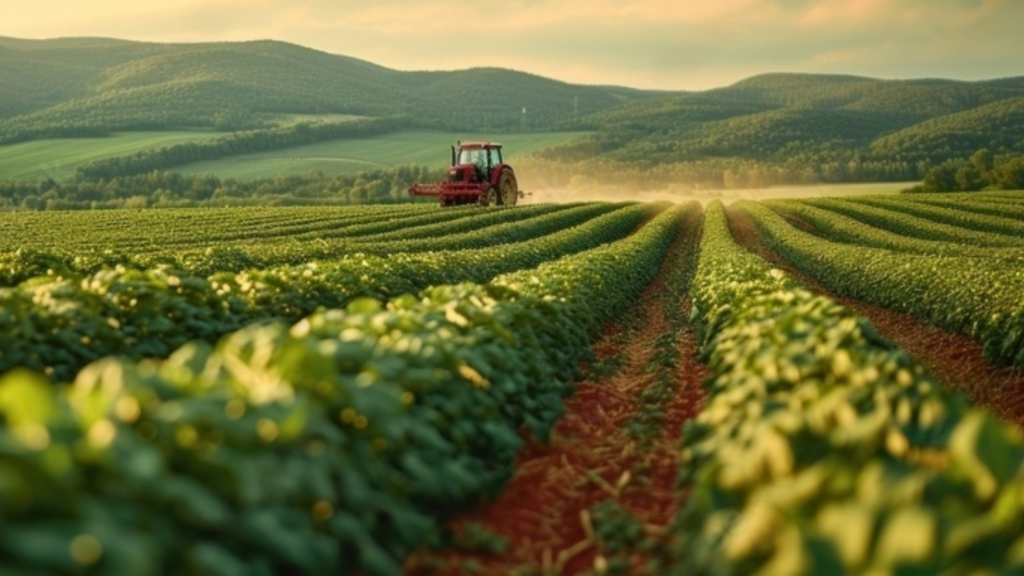Two-Field System in Agriculture
Innovation is continuously competing for attention in the agricultural industry, where new techniques and technology are at the center of the stage. But in the middle of all this drive for advancement, there is one age-old method that has endured —the Two-Field System. It’s a method also called crop rotation which is a long-standing practice that has supported societies for centuries by providing both environmental and practical benefits. We will examine the fundamentals of the Two-Field System in this blog, including its history, guiding ideas, and its ongoing relevance in modern agriculture.
Origins and Evolution:
The Two-Field System was first implemented in medieval Europe when a lack of land and antiquated farming methods called for creative alternatives. In its most basic form, this method creates two fields that are usually farmed alternately out of arable ground. In order to allow the soil to regain its fertility and replenish its nutrients, one field is left fallow while the other is planted with crops. In addition to optimizing land use, this cyclical strategy reduces the possibility of soil exhaustion, a major worry in pre-industrial agriculture.
The Two-Field System changed over time in response to both societal demands and agricultural improvements. Farmers improved their methods as population growth and food demand increased, introducing a variety of crop rotations and supplementary strategies like livestock grazing. These modifications highlighted the system’s adaptability and resilience, allowing it to function in a variety of environmental and financial contexts.
Principles and Practices:
The fundamental practice of crop rotation, which involves growing different crops consecutively on the same land, is at the core of the Two-Field System. In addition to controlling pests and suppressing weeds, this cycle replenishes nutrients. Farmers can lessen their reliance on chemical inputs, break insect cycles, and offset the loss of particular nutrients by switching up the crops they plant.
Strategic resource allocation and meticulous planting sequence planning are essential to crop rotation success. When planning their crop rotation plans, farmers need to take into account variables including market demand, soil composition, and climate. Including livestock in the rotation cycle also encourages symbiotic interactions between crops and animals and further enriches the soil through the deposition of manure.
Benefits and Advantages:
Numerous advantages of the Two-Field System are evident in the ecological, economic, and social spheres. Crop rotation promotes resilient agroecosystems that can endure environmental shocks by improving soil health and biodiversity from an environmental standpoint. Farmers can lessen traditional agriculture’s detrimental effects on biodiversity and water quality by using fewer chemical pesticides and fertilizers.
From an economic standpoint, farmers can reduce market volatility and diversify their sources of revenue by using the Two-Field System. Farmers can profit from specialized markets and lessen their reliance on a particular commodity by growing a variety of crops. Furthermore, the system’s rotating structure protects livelihoods and guarantees community food security by acting as a buffer against changes in yield and price.
Socially, the Two-Field System emphasizes sustainability and stewardship, strengthening the bond between farmers and the land. Communities support intergenerational learning and cultural identities by conserving traditional knowledge and behaviors. Furthermore, the system’s emphasis on labor-intensive techniques supports local economies and encourages employment in rural areas, resulting in dynamic and resilient agricultural landscapes.
Challenges and Considerations:
The Two-Field System has several considerations and obstacles despite its many benefits. It can be difficult and expensive to adapt and maintain ancient traditions in the current world of industrialized agriculture and globalized markets. Furthermore, farmers may need to innovate and adapt as typical crop rotation cycles are disrupted by climate patterns that are shifting and by unforeseen weather occurrences.
Additionally, there are situations when the Two-Field System’s scalability may be constrained, especially in areas with dense populations and extensive land use. It is still difficult to strike a balance between the need to produce food and protect the environment, thus holistic solutions that combine old knowledge with cutting-edge technology are required.
Conclusion:
The Two-Field System stands as a testament to agricultural sustainability and resilience in a time of swift technological progress and unpredictability in the environment. This age-old method, which has its roots in centuries-old customs, yet provides useful answers to modern problems like soil erosion and biodiversity loss. Adopting the principles of the Two-Field System serves as a reminder of the enduring wisdom inherent in the rhythms of nature and the tenacity of traditional knowledge as we manage the challenges of food production and land stewardship.


An excellent overview of the Two-Field System! The detailed explanation of its principles, benefits, and challenges makes it clear how this age-old technique can contribute to sustainable farming practices. Kudos for highlighting the balance between tradition and innovation in agriculture!
This article beautifully captures the timeless value of the Two-Field System in agriculture. The way it bridges historical practices with modern sustainability challenges is both insightful and inspiring. It’s a great reminder of how traditional methods can still be incredibly relevant in today’s world